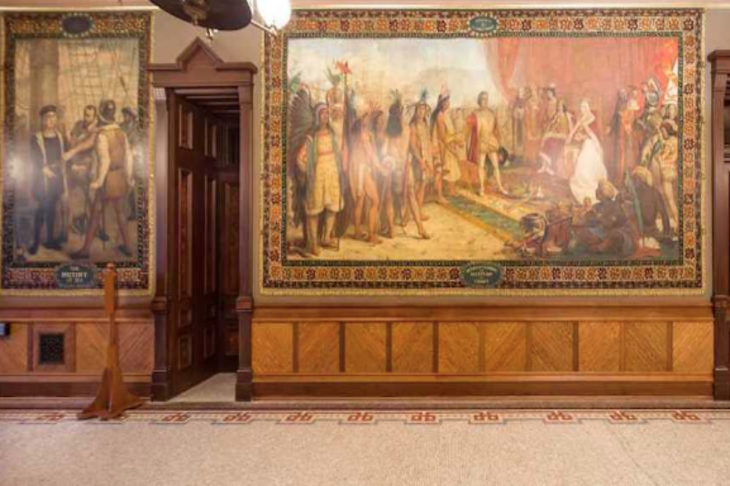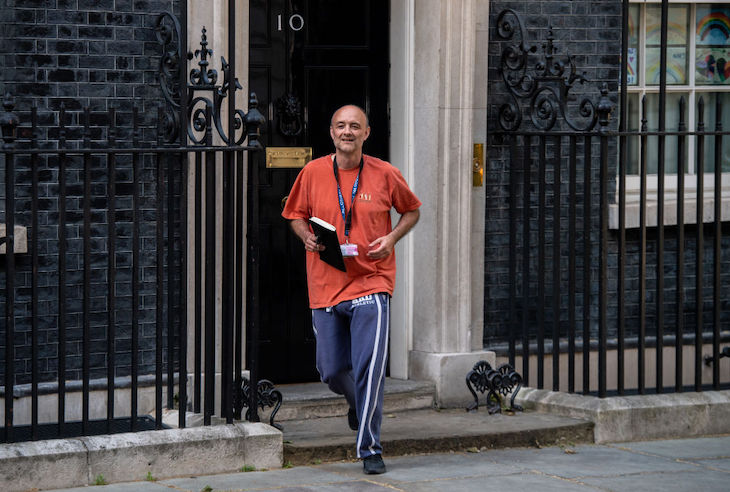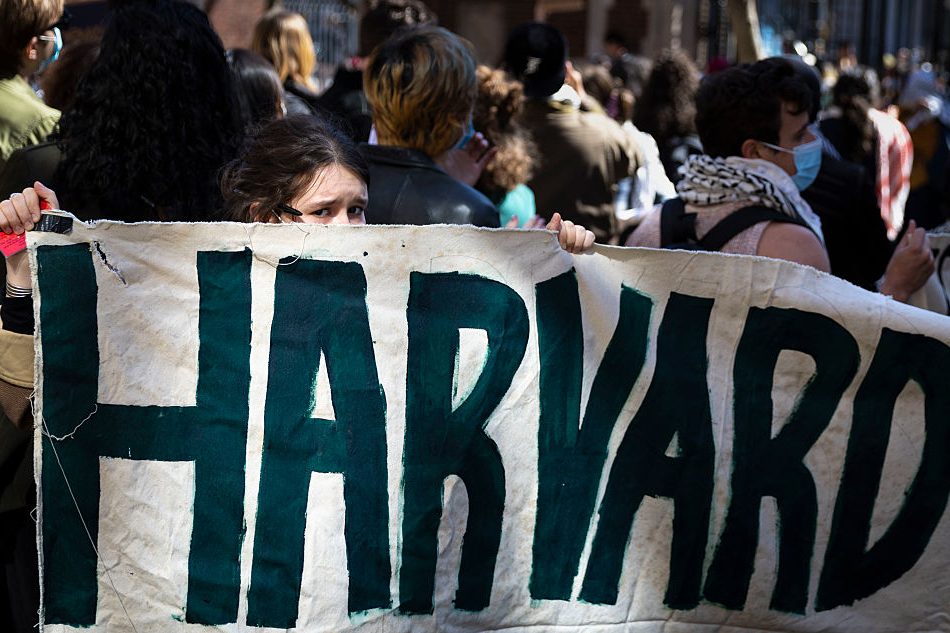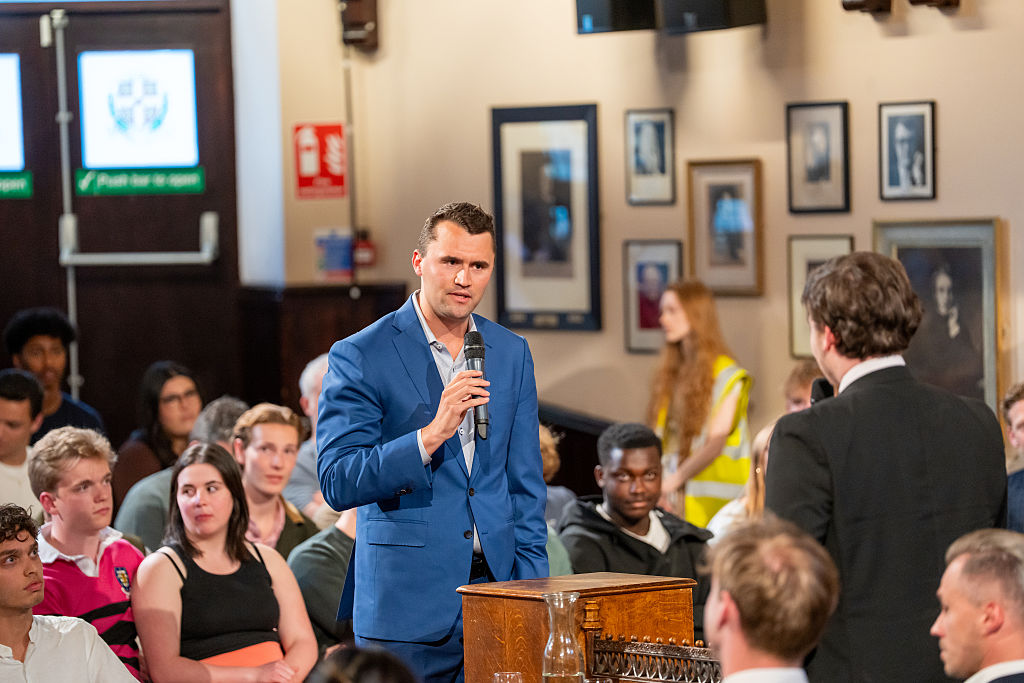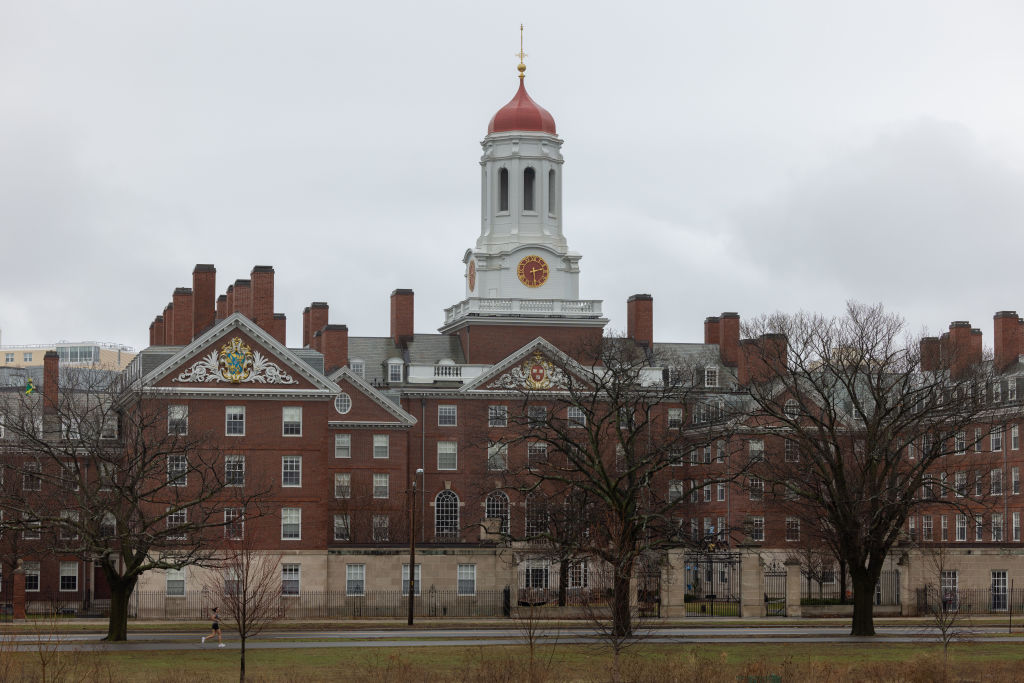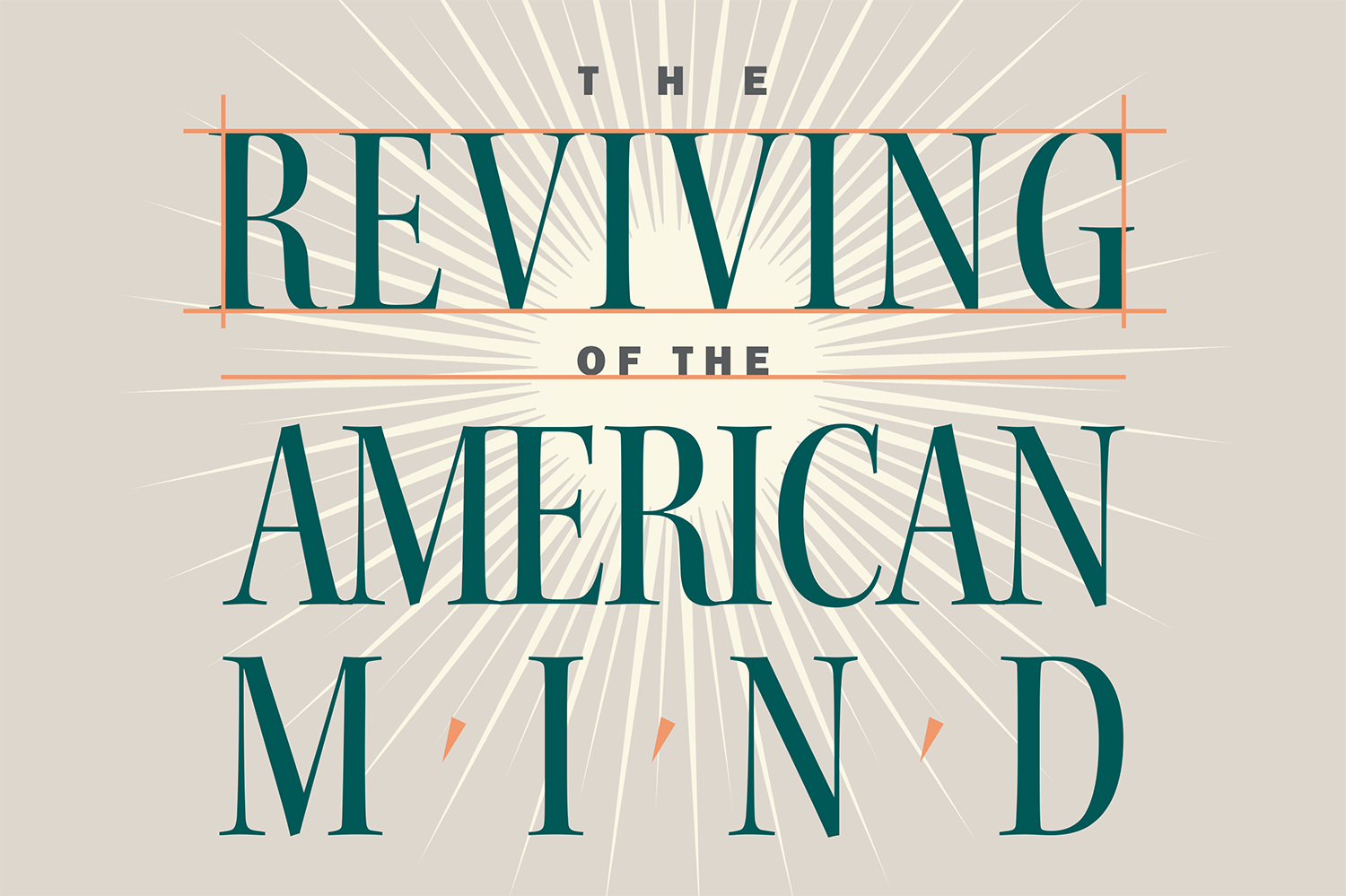The news that the University of Notre Dame, responding to complaints by some students, would ‘shroud’ its 12 134-year-old murals depicting Christopher Columbus was disappointing. It was not surprising, however, to anyone who has been paying attention to the widespread attack on America’s past wherever social justice warriors congregate.
Notre Dame may not be particularly friendly to its Catholic heritage, but its president, the Rev. John Jenkins, turned jesuitical when queried about the censorship. He said, apparently without irony, that his decision to cover the murals was not intended to conceal anything, but rather to tell ‘the full story’ of Columbus’s activities.
Welcome to the new Orwellian world where censorship is free speech and we respect the past by attempting to elide it.
Over the past several years, we have seen a rising tide of assaults on statues and other works of art representing our nation’s history by those who are eager to squeeze that complex story into a box defined by the evolving rules of political correctness. We might call this the ‘monument controversy,’ and what happened at Notre Dame is a case in point: a vocal minority, claiming victim status, demands the destruction, removal, or concealment of some object of which they disapprove. Usually, the official response is instant capitulation.
As the French writer Charles Péguy once observed, ‘It will never be known what acts of cowardice have been motivated by the fear of not looking sufficiently progressive.’ Consider the frequent demands to remove statues of Confederate war heroes from public spaces because their presence is said to be racist. New York Governor Andrew Cuomo, for example, has recently had statues of Robert E. Lee and Stonewall Jackson removed from a public gallery. In New York City, Mayor Bill de Blasio has set up a committee to review ‘all symbols of hate on city property.’
But it is worth noting that the monument controversy signifies something much larger than the attacks on the Old South or Italian explorers.
In the first place, the monument controversy involves not just art works or commemorative objects. Rather, it encompasses the resources of the past writ large. It is an attack on the past for failing to live up to our contemporary notions of virtue.
In the background is the conviction that we, blessed members of the most enlightened cohort ever to grace the earth with its presence, occupy a moral plane superior to all who came before us. Consequently, the defacement of murals of Christopher Columbus — and statues of later historical figures like Teddy Roosevelt — is perfectly virtuous and above criticism since human beings in the past were by definition so much less enlightened than we.
The English department at the University of Pennsylvania contributed to the monument controversy when it cheered on students who were upset that a portrait of a dead white male named William Shakespeare was hanging in the department’s hallway. The department removed the picture and replaced it with a photograph of Audre Lorde, a black feminist writer. ‘Students removed the Shakespeare portrait,’ crowed department chairman Jed Esty, ‘and delivered it to my office as a way of affirming their commitment to a more inclusive mission for the English department.’ Right.
High schools across the country contribute to the monument controversy when they remove masterpieces like Huckleberry Finn from their libraries because they contain ideas or even just words of which they disapprove.
The psychopathology behind these occurrences is a subject unto itself. What has happened in our culture and educational institutions that so many students jump from their feelings of being offended — and how delicate they are, how quick to take offense! — to self-righteous demands to repudiate the thing that offends them? The more expensive education becomes the more it seems to lead, not to broader understanding, but to narrower horizons.
Although there is something thuggish and intolerant about the monument controversy, it is not quite the same as the thuggishness of the Roman emperor Caracalla, who murdered his brother and co-emperor Geta and had statues of Geta toppled and his image chiseled off coins. Nor is it quite the same as what happened when Soviet dictator Joseph Stalin exiled Leon Trotsky, had him airbrushed out of the Great Soviet Encyclopedia, and sent assassins to Mexico to finish the job.
Iconoclasm takes different forms. The disgusting attacks on the past and other religious cultures carried out by the Taliban, for example, are quite different from the toppling of statues of Saddam Hussein by liberated Iraqis after the Iraq War. Different again was the action of America’s own Sons of Liberty in 1776, who toppled a statue of the hated George III and melted down its lead to make 40,000 musket balls. It is easy to sympathize with that pragmatic response to what the Declaration of Independence called ‘a long train of abuses and usurpations.’ It is worth noting, however, that George Washington censured even this action for ‘having much the appearance of a riot and a want of discipline.’
While the monument controversy does depend upon a reservoir of iconoclastic feeling, it represents not the blunt expression of power or destructiveness but rather the rancorous, self-despising triumph of political correctness. The exhibition of wounded virtue, of what we now call ‘virtue-signaling,’ is key.
Consider some recent events at Yale University, an institution where preening self-infatuation is always on parade. Yale recently formed a Committee to Establish Principles on Renaming and a Committee on Art in Public Spaces. Members of the former prowl the campus looking for buildings, colleges, faculty chairs, lecture programs, and awards that have politically incorrect names. The latter police works of art and other images on campus, making sure that anything offensive to favored groups is covered or removed.
At the residential college formerly known as Calhoun College, for example — it’s now called Grace Hopper College—the Committee ordered the removal of stained glass windows depicting slaves and other historical scenes of Southern life. Statues and other representations of John C. Calhoun have likewise been slotted for removal. Calhoun, an 1804 Yale graduate, was a leading statesman and political thinker of his day. But he was also an apologist for slavery, so he has to be erased from the record.
Of course, impermissible attitudes and images are never in short supply once the itch to stamp out history gets going. Two years ago it was Calhoun and representations of the Antebellum South. More recently it was a carving at an entrance to Yale’s Sterling Memorial Library depicting an Indian and a Puritan. The Puritan, if you can believe it, was holding a musket — a gun! Who knows, perhaps he was a member of the NRA or at least could give inspiration to other members of that very un-Yale-like organization. According to Susan Gibbons, one of Yale’s librarian-censors, the presence of an armed Puritan ‘at a major entrance to Sterling was not appropriate.’ Solution? Cover over the musket with a cowpat of stone — but leave the Indian’s bow and arrow alone!
Actually, it turns out that the removable cowpat of stone was only a stopgap. The outcry against the decision struck a chord with Peter Salovey, Yale’s president. ‘Such alteration,’ he noted, ‘represents an erasure of history, which is entirely inappropriate at a university.’ He’s right about that. But if anyone has mastered the art of saying one thing while doing the opposite it is President Salovey. He spoke against ‘the erasure of history.’ But then, instead of merely altering the image, he announced that Yale would go full Taliban, removing the offending stonework altogether.
In the bad old days, librarians and college presidents were people who sought to protect the past, that vast storehouse of offensive attitudes and behavior that also just so happens to define our common inheritance. In our own more enlightened times, many librarians and college presidents collude in its effacement.
Someone might ask, ‘Who cares what violence a super-rich bastion of privilege and unaccountability like Yale perpetrates on its patrimony?’ Well, we should all care. Institutions like Yale, Harvard, and Stanford are among the chief drivers of the ‘progressive’ hostility to free expression and other politically correct attitudes that have insinuated themselves like a fever-causing virus into the bloodstream of public life. Instead of helping to preserve our common inheritance, they work to subvert it.
Spiriting away stonework in the Ivy League may seem mostly comical. But there is a straight line from those acts of morally righteous intolerance to far less comical examples of puritanical censure.
Consider the case of James Damore, the now former Google engineer who wrote an internal memo describing the company’s cult-like ‘echo chamber’ of political correctness and ham-handed efforts to nurture ‘diversity’ in hiring and promotion. When the memo was publicized, it first precipitated controversy — then it provided Google CEO Sundar Pichai a high horse upon which to perch, declare Damore’s memo ‘offensive and not OK,’ and then fire him. For what? For expressing his opinion in a company discussion forum designed to encourage free expression!
In one way, there was nothing new about Google’s actions. Large companies have always tended to be bastions of conformity. Decades ago, everyone at IBM had to wear a white shirt and was strongly encouraged to espouse conservative social values. Today, everyone in Silicon Valley has to subscribe to the ninety-five theses of the social justice warrior’s creed, beginning with certain dogmas about race, fossil fuels, sexuality, and the essential lovableness of jihadist Muslims. If you are at Google and dissent from this orthodoxy, you will soon find yourself not at Google.
The violence in Charlottesville, Virginia, in 2017 was a godsend to the self-appointed hate police. In its immediate aftermath, companies around the country took pains to declare their rejection of ‘hate,’ and ProPublica, the Southern Poverty Law Center, and other leftish thugs expanded their witch hunts beyond such targets as the Daily Stormer — a vile anti-Semitic website. After Charlottesville, for example, ‘Jihad Watch’ — hardly a hate group website — was dropped by PayPal until a public outcry induced PayPal to reverse its decision. There have been other such casualties, and there will be many more.
Let’s step back and ask ourselves what motivates the left-wing virtuecrats attempting to enforce their new regime of political correctness. Christian theologians tell us that the visio beatifica — the beatific vision of God—is the highest pleasure known to man. Alas, that communion is granted to very few in this life. For the common run of mankind, I suspect, the highest earthly pleasure is self-righteous moral infatuation.
Like a heartbeat, moral infatuation has a systolic and diastolic phase. In the systolic phase, there is an abrupt contraction of sputtering indignation: fury, outrage, high horses everywhere. Then there is the gratifying period of recovery: the warm bath of self-satisfaction, set like a jelly in a communal ecstasy of unanchored virtue-signaling.
The communal element is key. While individuals may experience and enjoy moral infatuation, the overall effect is greatly magnified when shared. Consider the mass ecstasy that at first accompanied Maximilien Robespierre’s effort to establish a Republic of Virtue during the French Revolution’s Reign of Terror in 1793.
The response to Donald Trump’s comments about the murderous violence that erupted in Charlottesville provides another vivid example. Trump’s chief crime was to have suggested that there was ‘blame on both sides’ as well as ‘good people’ on both sides of the protest. I am not sure there was an abundance of ‘good people’ on either side of the divide that day, although Trump’s main point was to distinguish between lawful protest and hate-fueled violence. But forget about distinctions. The paroxysms of rage that greeted Trump were a marvel to behold, as infectious as they were unbounded. One prominent commentator spoke for the multitude when he described Trump’s response as a ‘moral disgrace.’
I didn’t think so, but then I thought that the President was correct when he suggested that the alt-left is just as much a problem as the alt-right. Indeed, if we needed to compare the degree of iniquity of the neo-Nazis and Ku Klux Klanners, on the one hand, and Antifa and its fellow travelers on the other, I am not at all sure which would come out the worse. Real Nazis — the kind that popped up like mushrooms in Germany in the 1920s and 1930s — are scary. But American neo-Nazis? They are a tiny bunch of pathetic losers. The Ku Klux Klan was a terrorist group with millions of members in its earlier incarnations. Now it too is a tiny bunch — 5,000 or 6,000 by most estimates — of impotent malcontents.
Antifa, on the other hand, has brought its racialist brand of violent protest to campuses and demonstrations around the country: smashing heads as well as property. I suspect that paid-up, full-time members of the group are few, but the ideology of identity politics that they feed upon is a gruesome specialty of the higher-education establishment today.
I also thought that the President was right to ask where the erasure of history would end. At Charlottesville it was a statue of Robert E. Lee. But why stop there? Why not erase the entire history of the Confederacy? There are apparently some 1,500 monuments and memorials to the Confederacy in public spaces across the United States. According to one study, most of them were commissioned by Southern women, ‘in the hope of preserving a positive vision of antebellum life.’ A noble aspiration, inasmuch as the country had recently fought a civil war that devastated the South and left more than 700,000 Americans dead. These memorials were part of an effort to knit the broken country back together. Obliterating them would also be an attack on the effort of reconciliation.
And what about Thomas Jefferson and George Washington? They both owned slaves, as did 41 of the 56 signers of the Declaration of Independence. What about them? To listen to many race peddlers these days, you would think they regarded George Orwell’s warning in 1984 as a how-to manual: ‘Every record has been destroyed or falsified,’ Orwell wrote, every book has been rewritten, every picture has been repainted, every statue and street and building has been renamed, every date has been altered. And that process is continuing day by day and minute by minute. History has stopped.’
Plato was right when he said that politicians are essentially rhetoricians. Rhetoric succeeds or fails not because of its logic or intellectual substance, but on the question of its emotional appeal. By that standard, I’d say that Donald Trump, though often rhetorically effective, missed an important rhetorical opportunity at Charlottesville. He didn’t understand that the politically correct dispensation that rules academia, the media, the Democratic Party, and large swathes of the corporate world requires a certain ritual homage to be paid to its reigning pieties about ‘racism’ in America.
Doubtless there are things to criticize about Donald Trump. But being racist isn’t among them. What infuriates his critics — but at the same time affords them so many opportunities to bathe in the gratifying fluid of their putative moral superiority — is that Trump refuses to collude in the destructive, politically correct charade according to which ‘racism’ is the nearly ubiquitous cardinal sin of white America. He is having none of that, and his refusal to go along with the attempted moral blackmail is driving his critics to a fever pitch. They scream ‘racism’ but, unlike other politicians, Trump refuses to cower in the corner whimpering. That he goes against their script infuriates them.
Back in 1965, the Frankfurt School Marxist Herbert Marcuse wrote an essay called ‘Repressive Tolerance.’ It is a totalitarian classic. Marcuse distinguished between two kinds of tolerance. First, there is what he called ‘bad’ or ‘false’ tolerance. This is the sort of tolerance that most of us would call ‘true’ tolerance, the sort of thing your parents taught you and that undergirds liberal democracy. Second, there is what Marcuse calls ‘liberating tolerance,’ which he defined as ‘intolerance against movements from the Right and toleration of movements from the Left.’
So here we are. The old idea of tolerance was summed up in such chestnuts as, ‘I disapprove of what you say, but I will defend to the death your right to say it.’ The new dispensation is: ‘I disapprove of what you say, therefore you may not say it.’
The Marxist-tinged ideology of the 1960s has had a few decades to marinate the beneficiaries of our free-market society, steeping them in the toxic nostrums that masquerade as moral imperatives in our colleges and universities. Today we find the graduates of those institutions manipulating the fundamental levers of political and corporate power.
The monument controversy shows the susceptibility of ‘liberating tolerance’ to fanaticism. And it reminds us that in the great battle between the partisans of freedom and the inebriates of virtue, freedom is ultimately negotiable — until it rouses itself to fight back. At stake is nothing less than the survival of our common history.
The above is adapted from a talk delivered on board the Crystal Symphony on July 19, 2018, during a Hillsdale College educational cruise to Hawaii. It was republished with kind permission from Imprimis and Hillsdale College.



